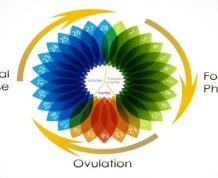Amenorrhea is a medical condition that represents the lack of a menstrual cycle. For a woman of reproductive age who is trying to conceive, this disorder can be devastating, because without a period, there can be no ovulation occurring either, meaning that your female fertility is seriously impaired. Claim Your 20 Free Pregnancy Tests – Click Here Here are the 2 most common types of amenorrhea and their specific causes:

It refers to the failure of the menstrual period to start in the first place – as early as the age of sixteen. The first menstrual cycle (menarche) represents the beginning of female fertility but does not signal the presence of ovulation, which requires steady patterns of menstrual flow, a regular duration of periods and intervals between periods.

The delay in the occurrence of a menstrual cycle during puberty beyond the age of sixteen is due to a variety of factors such as delayed puberty, absence of the uterus altogether, polycystic ovary syndrome (PCOS), pituitary gland and hypothalamus disorders, and premature depletion of egg cells in the ovaries – the most frequent cause.
Other genetic conditions leading to permanent or temporary lack of menstrual cycle include congenital adrenal hyperplasia and the Turner syndrome, a disorder on account of which secondary sexual characteristics fail to develop by the age of fourteen.

This term refers to the lack of cycle for three months in a row or for more than six months in a woman who has had regular menstrual periods before. The main causes of secondary lack of cycle include pregnancy, hypothalamus disorders due to stress, extreme exercise and severe weight loss, high levels of prolactin or testosterone, hypothyroidism, polycystic ovary syndrome, and premature ovarian failure.

Women who have given birth before could suffer from deep adhesions of the uterine lining due to the medical procedures used during the birth process, leading to a condition known as Asherman’s syndrome. It is also possible for women who have ceased taking birth control pills to experience lack of menstruation beyond the normal time period of three months.
Hormonal imbalances originating in the hypothalamus and the pituitary gland represent the main reasons of amenorrhea. Low levels of FSH (follicle-stimulating hormone) can cause low levels of estrogen to be produced, which leads to a hypo-gonadotropic absence of menstrual cycle; however, women suffering from this condition are possibly still fertile. High FSH levels lead to hyper-gonadotropic lack of period. To prevent this condition, strenuous physical exercise and harsh diets should be avoided, and any eating disorders (anorexia, bulimia) should be treated.

Women who suffer from this condition and are trying to conceive will likely need to seek medical assistance to restore their fertility. The treatment of this medical disorder depends on the underlying cause; pill-induced and exercise-related issues do not usually require medication. In order to resume female fertility and to avoid risks such as osteoporosis associated with this condition, you should consult with your healthcare provider to find out whether treatment is recommended.










Comments